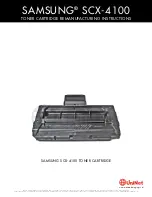
stallation instructions and wiring diagrams are included
with the kits; this information is also available online at
roadmasterinc.com. Installation instructions for the Brake-
Lite Relay are included in the literature packet.)
If the brake lights illuminate and the
towed vehicle has combined lighting…
…one of the three alternatives below is required:
•
A Universal Wiring Kit (part number 154)
with
a Brake-
Lite Relay — a system of diodes is installed to rewire the
vehicle’s turn signals, taillights and brake lights for towing.
See Step C — “If required, install the Brake-Lite Relay.”
•
Install an optional Bulb and Socket set, part numbers
152-LED or 155.
•
Install an optional magnetic tow light system (part num-
ber 2100 or 2120).
If the brake lights illuminate and the
towed vehicle has separate lighting…
…one of the four alternatives below is required:
•
A Universal Wiring Kit (part number 154)
with
a Brake-
Lite Relay — a system of diodes is installed to rewire the
vehicle’s turn signals, taillights and brake lights for towing.
See Step C — “If required, install the Brake-Lite Relay.”
•
Install six diodes, and jump the diodes. See page 7.
•
Install an optional Bulb and Socket set, part numbers
152-LED or 155.
•
Install an optional magnetic tow light system (part num-
ber 2100 or 2120).
If the brake lights do not illuminate…
…an optional stop light switch
must
be installed. Stop
light switch kits for many vehicles are available through
ROADMASTER; visit roadmasterinc.com for the most cur-
rent list.
Any one of the following tow lighting systems must also
be installed with the stop light switch:
•
A Universal Wiring Kit (part number 154) — a system
of diodes is installed to rewire the vehicle’s turn signals,
taillights and brake lights for towing.
•
An optional Bulb and Socket set, part numberws 152-
LED or 155.
•
An optional magnetic tow light system (part number
2100 or 2120)
Step C
If required, install the Brake-Lite Relay
Note: do not install the Brake-Lite Relay unless it is
required. Refer to Step B — “Modifications to the towed
vehicle’s lighting system.”
If the Brake-Lite Relay is required, install it now. The
instructions are included in the literature packet. After the
Brake-Lite Relay is installed, proceed to Step D, “Wire
and attach the ICX transmitter.”
If the Brake-Lite Relay is not required…
…proceed to Step D, “Wire and attach the ICX trans-
mitter.”
continued on next page
continued from preceding page
4.
Route the wiring harness (Figure 1) from the break
away switch to the firewall (or, from the firewall to the
break away switch, whichever is more convenient), avoid-
ing moving parts, sharp edges, the fuel lines or hot com-
ponents such as the engine or exhaust system. Where
appropriate, use wire ties to secure the break away wiring
harness.
Connect the wiring harness to the break away
switch.
5.
Cut through the included grommet (Figure 1) on one
side, slide it over the wiring harness and fit the grommet
into the hole in the firewall. Feed the remaining length of
the wiring harness through the grommet. Then, seal the
grommet with a silicone sealant.
You will connect the wiring harness to the ICX trans-
mitter in a later step.
Step B
Modifications to the
towed vehicle’s lighting system
A supplemental braking system will affect the opera-
tion of the vehicle’s tow lighting system. Use the informa-
tion below to determine if optional components must be
installed in a vehicle which has been wired for towing — or,
if no lighting system has been installed, which systems
are appropriate.
1.
First, identify the type of brake and turn signals in the
vehicle. There are two types — combined or separate.
In a
combined
system
(Figure 2), the brake light
does the flashing for the
turn signal; in a
separate
system (Figure 2), there
are amber or red turn
signal lights which are
separate from the brake
lights.
2.
Next, test to see if
the towed vehicle’s brake
lights will illuminate with
the engine off — with the
ignition at the “tow” posi-
tion, press the brake ped-
al and check the brake
lights.
3.
Based on whether or
not the brake lights illuminate, and the type of brake and
turn signals, there are three possibilities:
• the brake lights illuminate and the towed vehicle has
combined lighting;
• the brake lights illuminate and the towed vehicle has
separate lighting; or
• the brake lights do not illuminate.
There are a number of lighting methods available for
each of these three possibilities; they are described be-
low.
(If you choose to install a Universal Wiring Kit, a Bulb
& Socket Wiring Kit or magnetic tow lights, complete in-
Figure 2
4



























